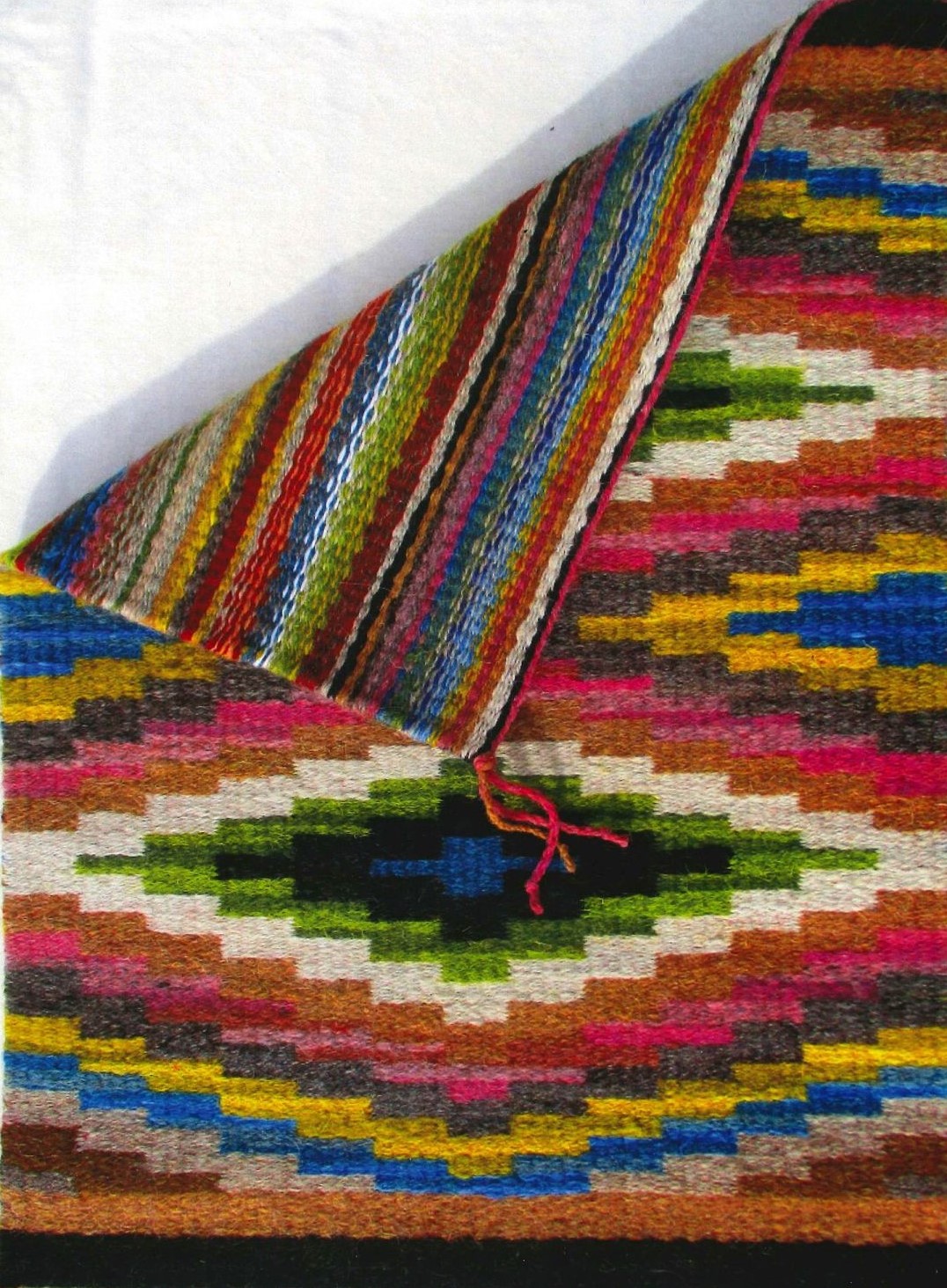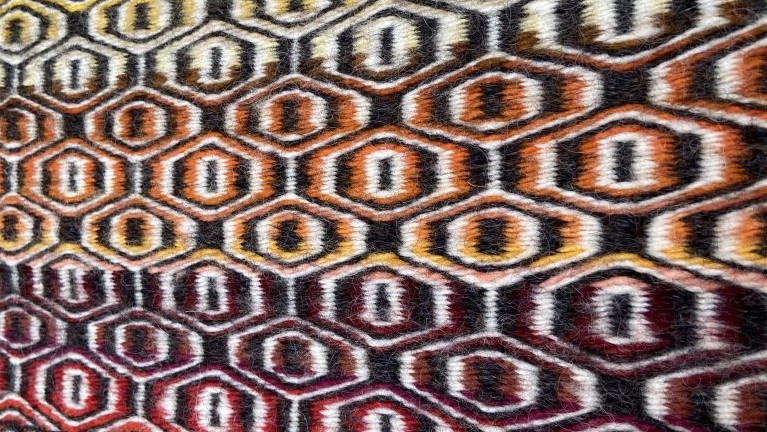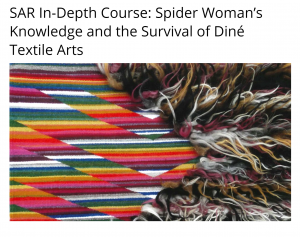Detail of weaving by Venancio Aragon (Diné), SAR’s 2020 Rollin and Mary Ella King Native artist fellow.
Guest post by Abra Wenzel.
It was a cold and snowy day in Ottawa, Canada, and I was both anxious and excited to be joining a course about Navajo weaving. I was nervous because I knew little about Navajo weaving, but I was eager to learn. I was particularly interested in this three-part course, led by Navajo weaver Venancio Aragon, for its closeness to my own research in the Canadian subarctic with Indigenous moose- and caribou-hair tufters. Venancio’s course, “Spider Woman’s Knowledge and the Survival of Diné Textile Arts,” particularly intrigued me for its discussion and championing of textile arts, especially from an artist’s perspective and voice.

Venancio Aragon. Photo courtesy of the artist.

A work in progress by Venancio Aragon.
We all Zoomed in and unmuted. By way of introductions, we learned that we were a group composed of artists, researchers, collectors, and art appreciators. Venancio began by exposing the early approaches of anthropologists and archaeologists and the ramifications of Western narratives about Navajo peoples and their artistry. These approaches have been extractive and limit, if not silence, Navajo peoples and their histories. In highlighting these scholarly limitations, Venancio emphasized the importance of valuing, listening to, and learning from Indigenous oral stories, which provide greater and more encompassing understandings not only of Diné origin stories, such as that of Spider Woman and her importance to the Navajo, but also of arts like weaving that are embedded in and speak to these narratives.
In our second session, we were introduced to the role of market economies, including trading posts, in the lives of Diné peoples and their weavings. Trading posts and Indigenous arts markets are important for their role in shaping textile histories. Venancio related for us some of the darker consequences of markets, such as the role that commoditization played in the emergence of terms like kitsch and souvenir, as well as the trope of the vanishing Indian. Once again, these examples demonstrate outside identity construction by non-Indigenous spectators.
However, Venancio also emphasized the influences Diné weavers drew from these experiences and how they incorporated new designs and materials into their work, such as the now highly recognizable “eye dazzler” design. Many of the designs that arose through market exchange continue to be made and remade today. Importantly, market systems were, and continue to be, important spaces for Navajo weavers to practice economic sovereignty while still making for their own use.
In our final meeting, Venancio confronted current typologies of Diné weavings. Particularly interesting in this session was our discussion of gender. Venancio deconstructed the preconceived Western notion of weaving as a female art. In truth, weaving is not gender limited but practiced by many artists, women and men, for whom it holds great significance.
The sessions were complemented by the incorporation of films produced and made by or in collaboration with Diné organizations and artists. Each film emphasized an artist and a Navajo voice. In each, we learned about the significance of weaving to each artist’s past, present, and future. The class was made even more special with personal accounts from Venancio and his mother, Irveta Aragon. An enjoyable addition to the course, particularly to me because of my unfamiliarity with Navajo textiles, was the sharing of weavings and stories by fellow classmates who have become longtime admirers of Navajo weavings.
Venancio Aragon. Two Stories, 2017. Handspun Navajo Churro wool, 28″ x 38″. Photo courtesy of the artist.

In each session, Venancio brought us on a journey that exposed from its beginnings to the present the impact of non-Indigenous institutions on Diné peoples and their making. Venancio clearly explained the significance of his art by weaving the Indigenous perspectives with anthropological and archaeological, economic, historical, and artistic narratives to present a more encompassing Navajo history that not only shows the effects of limited narratives, but also illuminates the sovereignty that Indigenous peoples, including artists, have continued to exercise through each moment.
Abra Wenzel is a PhD candidate in the Department of Anthropology and Sociology at Carleton University. Her research takes her to the Mackenzie Basin in the Canadian subarctic, where she works with and learns from Dene, Inuvialuit, and Métis artists who specialize in the art of moose- and caribou-hair tufting. Through her research, she intends to illuminate the significant role northern Indigenous women play in their communities through their art making and participation in the North American Indigenous tourism art industry.

